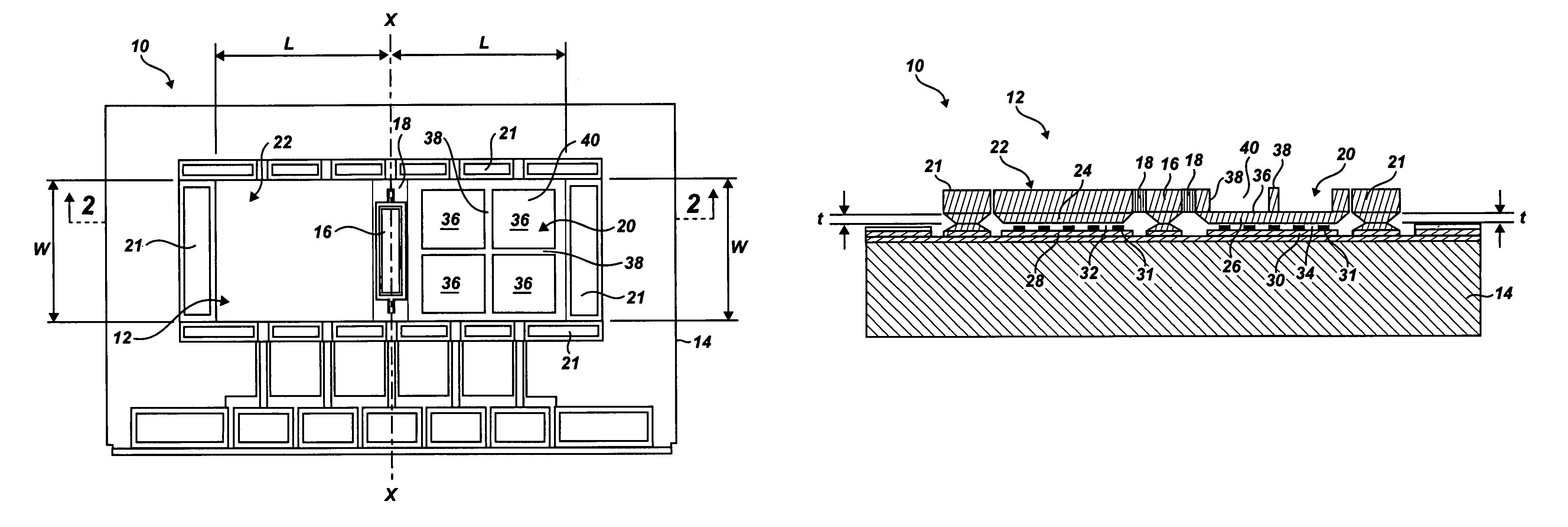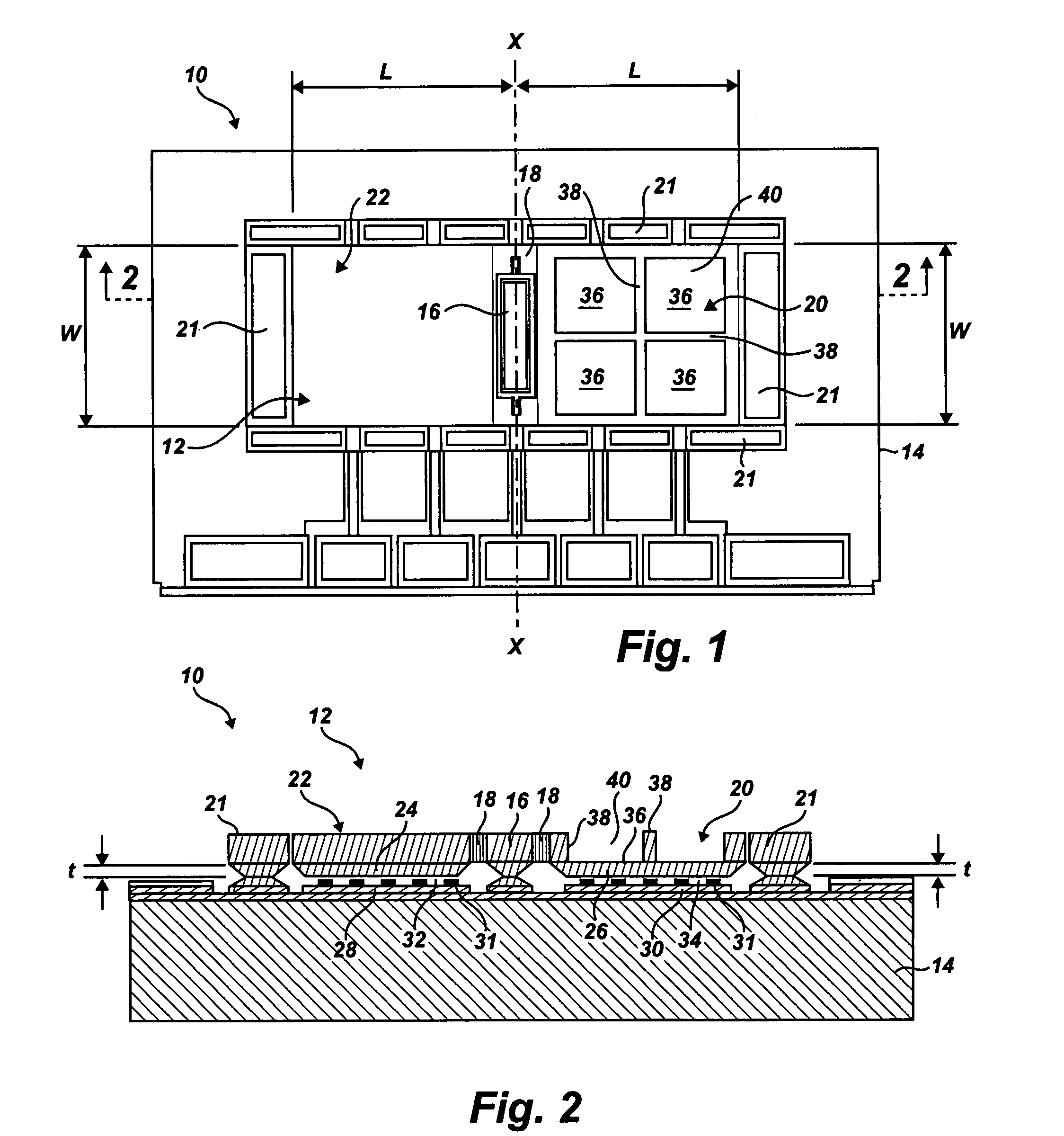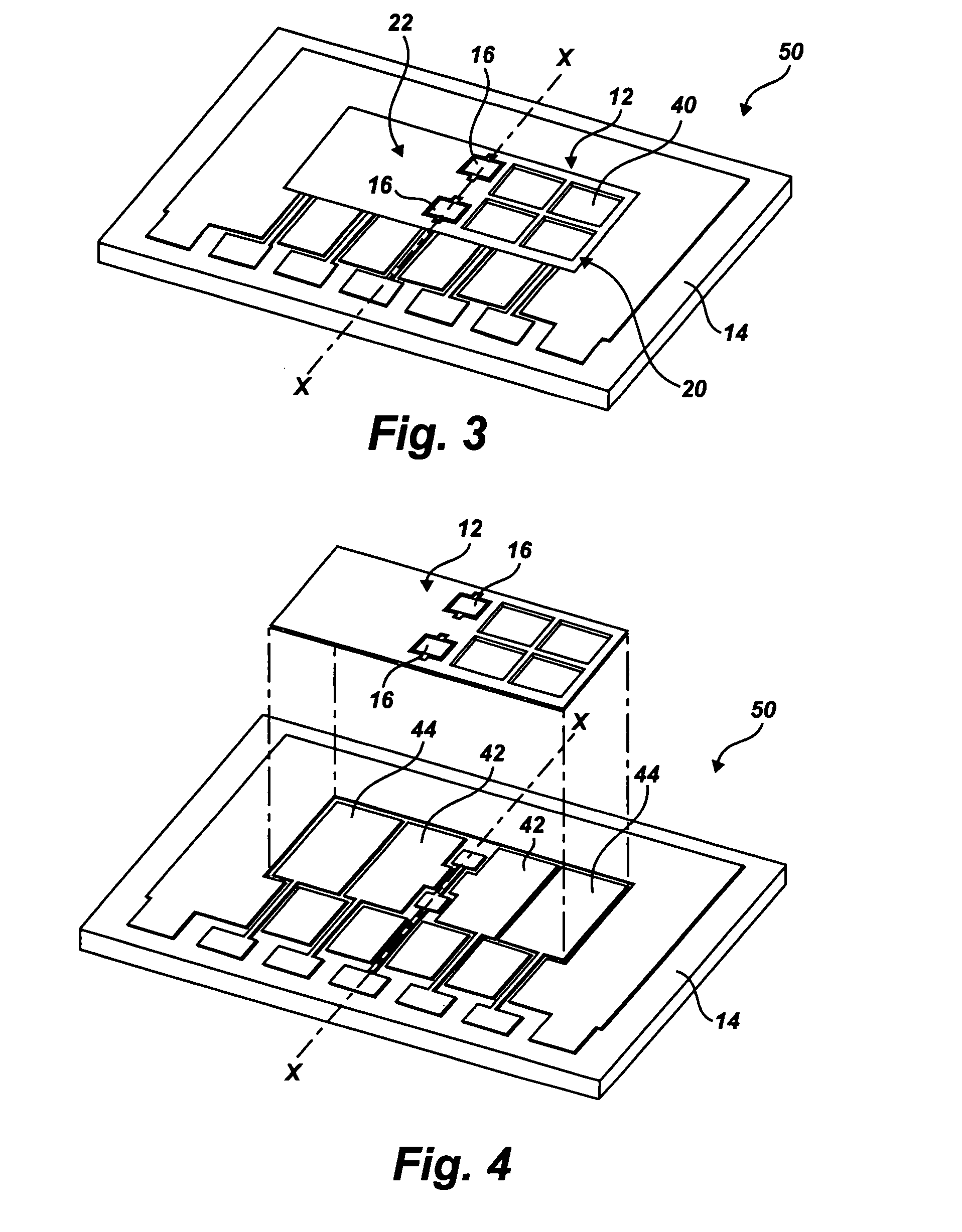Pendulous accelerometer with balanced gas damping
a pendulous accelerometer and gas damping technology, applied in the direction of speed/acceleration/shock measurement, measurement devices, instruments, etc., can solve the problems of reducing sensitivity, reducing resonant frequency, and reducing the total mass of the plate, so as to reduce the overall chip size, balanced gas damping, and high sensitivity
- Summary
- Abstract
- Description
- Claims
- Application Information
AI Technical Summary
Benefits of technology
Problems solved by technology
Method used
Image
Examples
Embodiment Construction
Reference will now be made in detail to the present preferred embodiments of a pendulous accelerometer, examples of which are illustrated in the accompanying drawings.
For purposes of explanation and illustration, and not limitation, a perspective view of an exemplary embodiment of the accelerometer is shown in FIGS. 1 and 2 and is designated generally by reference character 10.
Accelerometer 10 includes a sensing plate 12 and a substrate 14. Sensing plate 12 is attached to substrate 14 by one or more anchor portions 16 located near the center of the plate. Anchor portions 16 define a hinge axis x. Anchor portions 16 attach sensing plate 12 to substrate 14, allowing sensing plate 12 to rotate about hinge axis x.
In one exemplary embodiment, substrate 14 is made from a semiconductor such as silicon. In another exemplary embodiment, substrate 14 comprises a silicon on insulator (SOD) structure. Similarly, sensing plate 12 can also be made of a semiconductor such as silicon.
As shown in FI...
PUM
 Login to View More
Login to View More Abstract
Description
Claims
Application Information
 Login to View More
Login to View More - R&D
- Intellectual Property
- Life Sciences
- Materials
- Tech Scout
- Unparalleled Data Quality
- Higher Quality Content
- 60% Fewer Hallucinations
Browse by: Latest US Patents, China's latest patents, Technical Efficacy Thesaurus, Application Domain, Technology Topic, Popular Technical Reports.
© 2025 PatSnap. All rights reserved.Legal|Privacy policy|Modern Slavery Act Transparency Statement|Sitemap|About US| Contact US: help@patsnap.com



